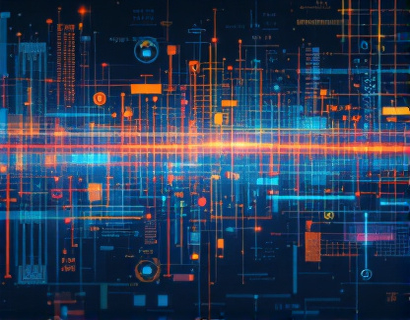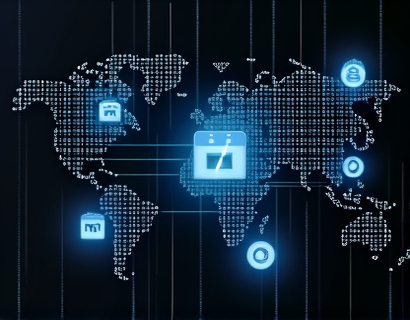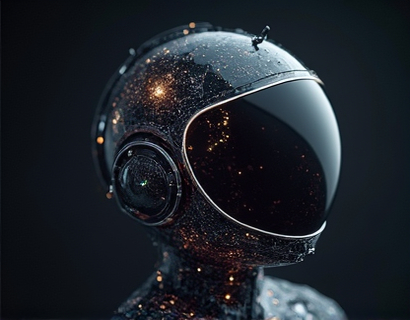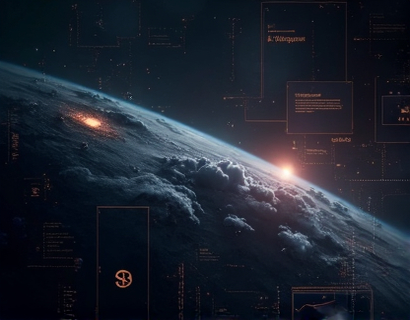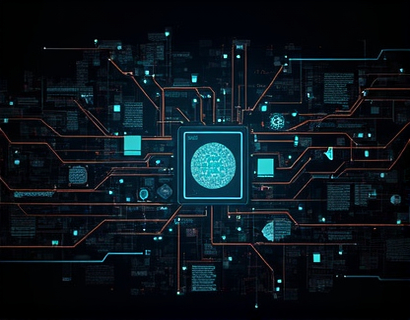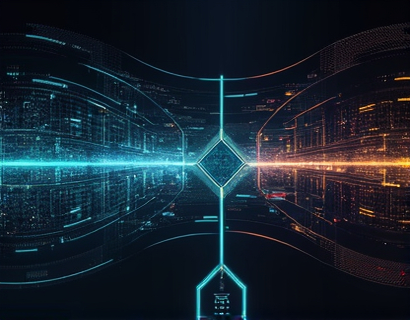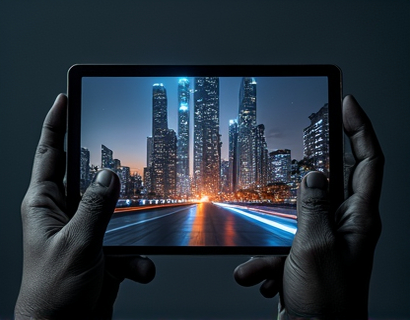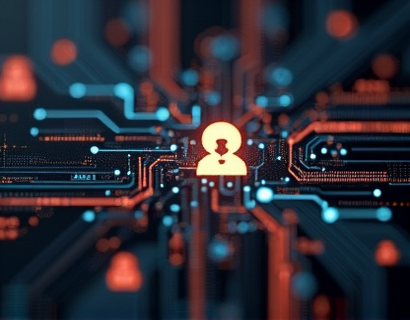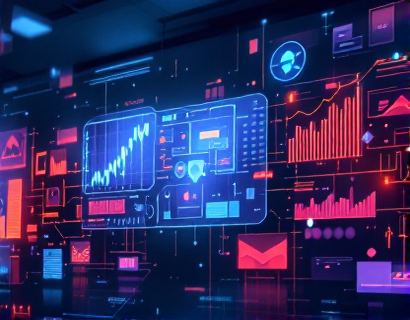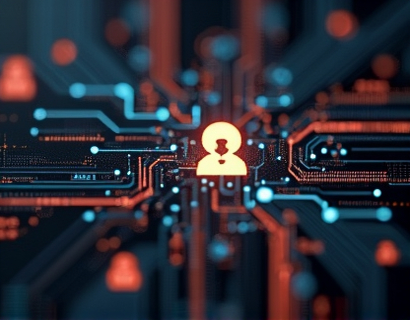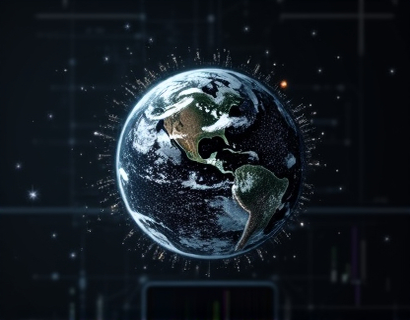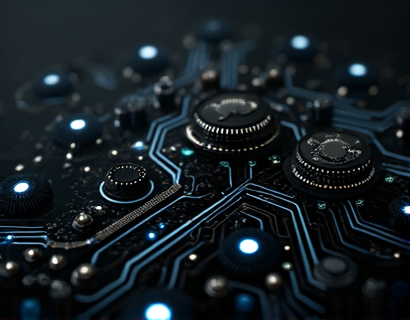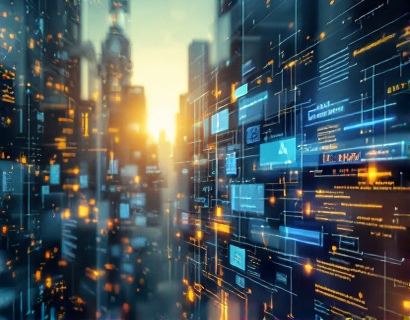Revolutionizing Digital Engagement: The Convergence of Crypto and AI
The intersection of cryptocurrency and artificial intelligence (AI) is ushering in a new era of digital transformation, redefining how we interact with technology and each other. This convergence is not just a technological advancement but a paradigm shift that is revolutionizing app ecosystems and driving unprecedented growth in the tech sector. As we delve into this topic, it's essential to understand the fundamental roles that both crypto and AI play and how their synergy is fostering innovation and enhancing user experiences.
The Role of Cryptocurrency in Digital Transformation
Cryptocurrency, since its inception with Bitcoin in 2009, has evolved from a niche digital currency to a foundational element of the modern financial system. Beyond its use as a medium of exchange, cryptocurrency has become a key driver of decentralization, security, and transparency in digital transactions. The underlying blockchain technology ensures that transactions are immutable and verifiable, reducing the need for intermediaries and lowering transaction costs. This has profound implications for various industries, from finance and supply chain management to healthcare and governance.
One of the most significant impacts of cryptocurrency is its ability to facilitate peer-to-peer transactions without the need for traditional financial institutions. This democratization of finance opens up new opportunities for individuals and businesses, especially in regions with underdeveloped banking infrastructure. Moreover, the programmable nature of blockchain allows for the creation of smart contracts, which are self-executing contracts with the terms directly written into code. Smart contracts automate and enforce agreements, reducing the risk of fraud and increasing efficiency.
AI: The Brain Behind the Digital Revolution
Artificial intelligence, on the other hand, is transforming the way we process and analyze data. AI algorithms can learn from vast amounts of data, identify patterns, and make predictions or decisions with minimal human intervention. Machine learning, a subset of AI, enables systems to improve their performance over time without being explicitly programmed. This capability is crucial for developing intelligent applications that can adapt to changing environments and user needs.
AI's applications span a wide range of sectors, from healthcare and finance to entertainment and education. In healthcare, AI is used for diagnostic imaging, drug discovery, and personalized treatment plans. In finance, AI powers fraud detection, risk assessment, and algorithmic trading. The integration of AI into app ecosystems enhances user experiences by providing personalized recommendations, predictive analytics, and seamless interactions.
Synergy Between Crypto and AI
The true power of the crypto-AI convergence lies in their synergy, where the strengths of one complement the weaknesses of the other. Cryptocurrency provides a secure, decentralized, and transparent platform for AI applications to operate on, while AI enhances the functionality and user experience of crypto-based services. This synergy is driving the development of intelligent app ecosystems that are more secure, efficient, and user-friendly.
One of the key areas where crypto and AI intersect is in the realm of decentralized finance (DeFi). DeFi platforms leverage blockchain technology to create financial services that are open, transparent, and accessible to anyone with an internet connection. AI algorithms can optimize these platforms by predicting market trends, managing risks, and automating trading strategies. This combination not only enhances the efficiency of financial transactions but also makes them more accessible to a global audience.
Another significant application is in the field of identity verification and digital credentials. Traditional identity systems are centralized, vulnerable to breaches, and often require extensive paperwork. By combining blockchain and AI, it is possible to create decentralized identity solutions that are secure, verifiable, and user-controlled. AI can help in verifying identities through biometric data and behavioral patterns, ensuring that only authorized users access sensitive information.
Enhancing User Interactions with Intelligent App Ecosystems
The convergence of crypto and AI is not just about backend technologies; it's also about creating intuitive and engaging user experiences. Intelligent app ecosystems powered by these technologies can offer personalized interactions, real-time feedback, and seamless integration across devices and platforms. Users can enjoy a more seamless and secure digital experience, from banking and shopping to social networking and entertainment.
Personalization is a critical aspect of modern app ecosystems. AI algorithms can analyze user behavior, preferences, and context to deliver tailored content and recommendations. For instance, a crypto-based music streaming service can use AI to curate playlists based on a user's listening history and current mood, while ensuring that transactions are secure and transparent through blockchain technology. This level of personalization enhances user satisfaction and loyalty, driving engagement and retention.
Moreover, AI-powered chatbots and virtual assistants can provide 24/7 customer support, answering queries, and resolving issues in real-time. These AI-driven interfaces can understand natural language, recognize emotions, and adapt to user preferences, making interactions more natural and efficient. In the context of crypto apps, AI can help users manage their digital assets, monitor market trends, and execute trades with minimal friction.
Fostering Innovation and Growth in the Tech Sector
The integration of crypto and AI is not only transforming existing industries but also giving rise to new ones. Startups and established companies are leveraging these technologies to develop innovative solutions that address real-world problems. For example, supply chain management can benefit from blockchain's transparency and AI's predictive analytics to optimize logistics, reduce costs, and ensure product authenticity. In the realm of smart cities, AI can manage traffic flow, energy consumption, and public safety, while blockchain ensures secure and transparent data sharing among various stakeholders.
This convergence also fosters a culture of innovation by lowering the barriers to entry for developers and entrepreneurs. Open-source blockchain platforms and AI frameworks make it easier for individuals and small teams to build and deploy cutting-edge applications. The crypto ecosystem's incentive structures, such as tokenomics and decentralized governance, encourage community participation and collaboration, leading to more robust and resilient solutions.
Challenges and Considerations
Despite the numerous benefits, the crypto-AI convergence is not without challenges. Regulatory uncertainty remains a significant hurdle, as governments worldwide grapple with how to oversee these decentralized and often borderless technologies. Ensuring compliance with existing laws while advocating for supportive regulatory frameworks is crucial for the sustainable growth of these technologies.
Another challenge is the technical complexity involved in integrating blockchain and AI systems. Developers need to possess a deep understanding of both domains to create seamless and secure applications. Additionally, the energy consumption associated with blockchain, particularly proof-of-work consensus mechanisms, raises environmental concerns that need to be addressed through more sustainable alternatives like proof-of-stake.
Conclusion
The convergence of cryptocurrency and artificial intelligence is revolutionizing digital engagement by creating intelligent app ecosystems that are more secure, efficient, and user-friendly. This synergy is driving growth and innovation across various industries, from finance and healthcare to supply chain and smart cities. As the tech landscape continues to evolve, the potential for further advancements and new applications is immense. By embracing this convergence, we can unlock new possibilities and shape a more connected and intelligent future.







